On August 11, 2021, the Office of Inspector General of NASA (GAO) published a report on the progress of the Artemis program. Special attention was paid to the new xEMU (Exploration Extravehicular Mobility Unit) spacesuits, which would be used by astronauts during walks on the lunar surface.
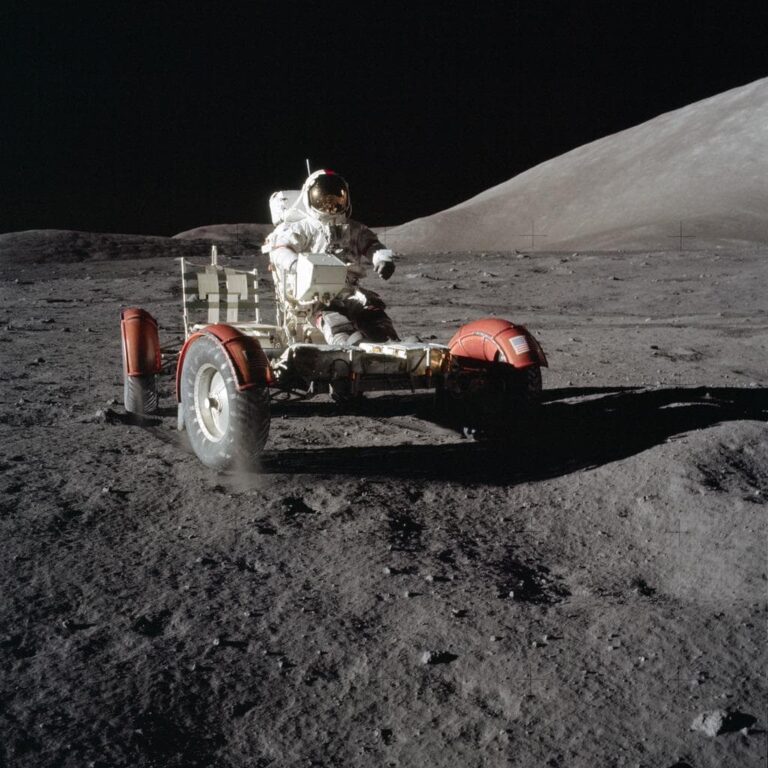
The inspectors came to rather disappointing conclusions. The spacesuits will be ready for use no earlier than 2025, which negates the already rather small probability that NASA will be able to achieve its stated goal of returning a man to the Moon by the end of 2024.
Why can’t the American Aerospace Agency just take spacesuits used for spacewalks from the ISS to the Moon? What difficulties arise in the design and operation of lunar spacesuits? To answer these questions, we need to understand how they are created and how they differ from their “colleagues” used for “space walks” in low Earth orbits.
Suits for going to the surface of the Moon have their own characteristics that significantly distinguish them from the spacesuits currently in use. The fact is that during extravehicular activity (EVA), the astronaut’s legs are at best used to fix on the ISS manipulator boom, most of the time remaining a real atavism of the “space man”.
On the surface of the celestial body, the legs should be actively moved, and this should not cause inconvenience. So if conventional spacesuits, in fact, “grew” out of modified flight equipment, then the lunar ones were an independent development. In 1962, NASA organized a competition to create “space suits” for the Apollo program. Two applications reached the final — Hamilton Standard Division and ILS (International Latex Corporation). It’s funny that the latter, which produces, among other things, women’s underwear, bypassed many “mastodons” at the competition, offering the most convenient solution. The secret lay in the innovative hinges — corrugated rubber, tied with wire, made it easy to bend the limbs even in a vacuum.
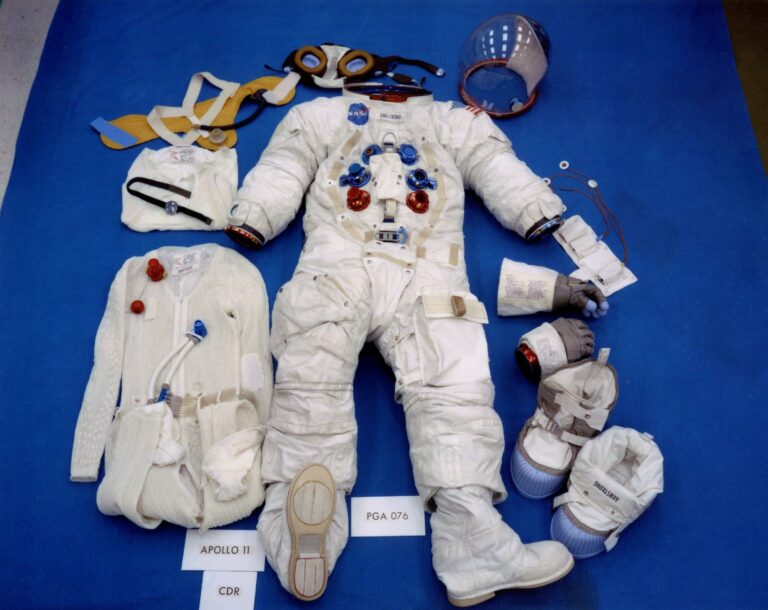
As a result, the aerospace administration decided to give the production to Hamilton, but at the same time use the design proposed by ILC. However, such a division of labor was not very effective — the companies were not able to establish close cooperation. Therefore, in 1965, a new competition was organized, which was won by ILC with a model designated A5L.
For the first landing on the Moon, it was decided to use the A7L modification, which eventually became the most famous spacesuit of the Apollo program. It was seen by hundreds of millions of viewers during the live broadcast of the historic “first step”, and it is also present in almost all photos related to this event. The suit is a combination of the “victorious” version of the A5L and the A6L modification, which included integrated thermal protection and antimicrometeorite layers. After the Apollo 1 fire at the launch site in January 1967, it was modified to meet the requirements of increased fire resistance.
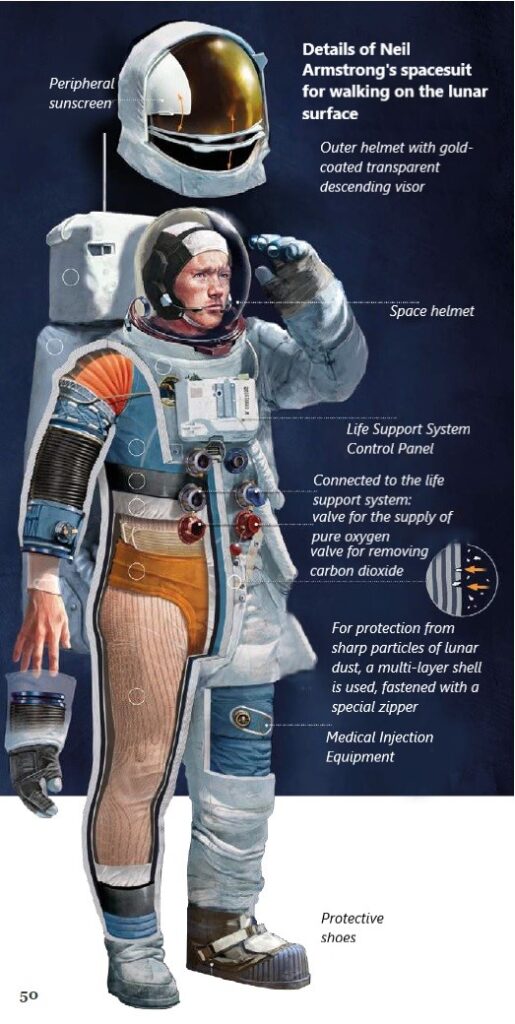
The total weight of the A7L was 91 kg. Its shell was made of thirteen layers of various materials consisting of nylon, aluminized mylar, dacron fibers, aluminized polyimide film and a layer of fire-resistant fabric. The life support system of this spacesuit was 6 hours with an additional 30-minute reserve.
The spacesuits for the Apollo 15, 16 and 17 expeditions were significantly improved, taking into account the experience of previous expeditions, as well as the fact that the lunar missions of the J series had to have a longer duration and take place with the participation of the “lunar vehicle” LRV (Lunar Roving Vehicle). The suits received the designation A7LB. They had two new joints on the neck and waist. An additional waist joint allowed the astronaut to sit comfortably on the rover, and the increased mobility of the cervical spine provided a better view while driving. In addition, the resource of the life support system was increased by one hour, which, together with the use of lunar vehicles, allowed the expedition crews to explore a much larger area and collect very valuable samples of lunar rocks.

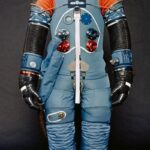

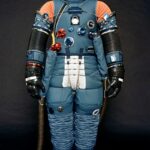
As for the USSR, they went the other way and created a semi-rigid design “Krechet”. The Soviet plan for landing on the surface of the Moon provided for the need to provide a five-kilometer “march” to the backup spacecraft in case of problems with the main one. Therefore, the spacesuit had greater autonomy (10 hours) and was tested for the possibility of making a long transition.
The main feature of the “Krechet” was that it was not put on a person, but on the contrary — a person “entered” into a spacesuit. For this purpose, a hatch was provided in the back of the design. It had a system of special tripwires and clamps necessary to ensure the immobility of a person during maneuvers. The fact is that due to the low mass of the Soviet lunar spacecraft, the displacement of the center of gravity due to the awkward movement of a person could lead to big trouble.
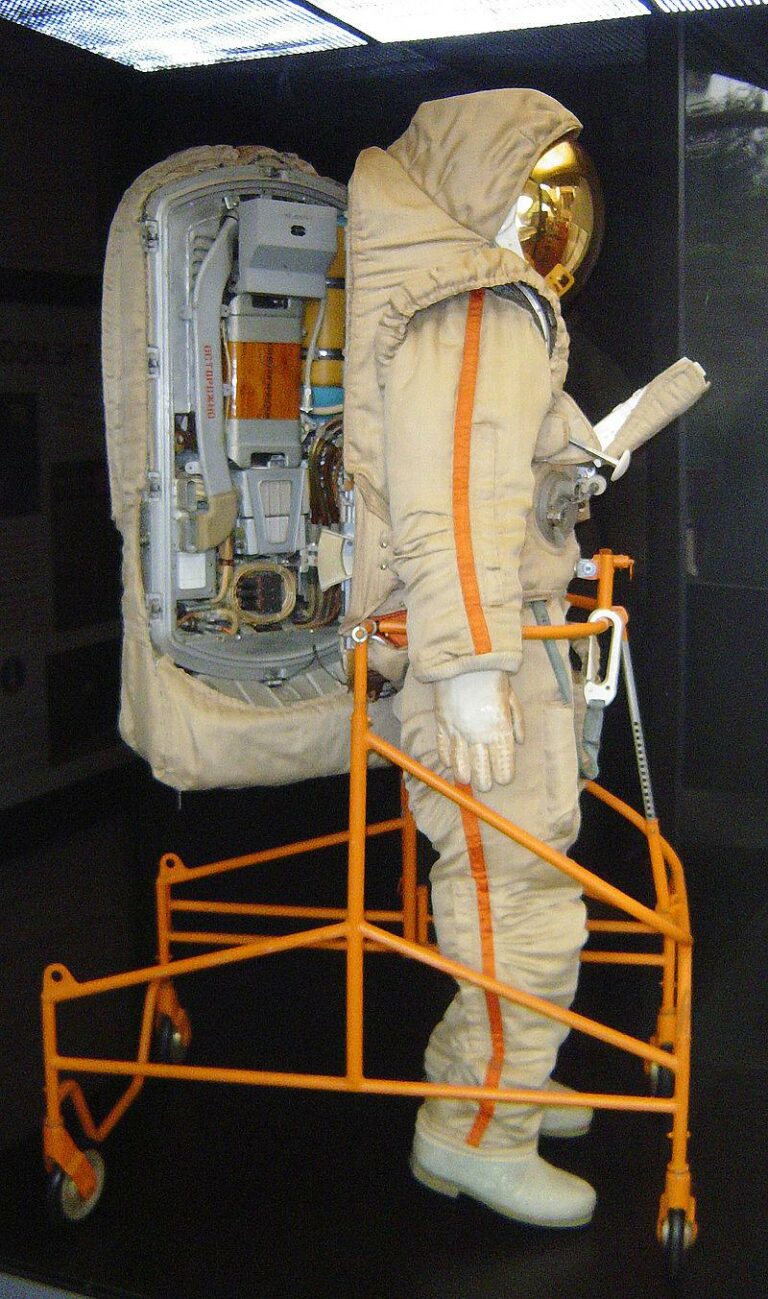
But the USSR never landed on the Moon, so the “Krechet” was never used in real flight conditions. However, the efforts and resources spent on it were still not in vain. On the basis of the “Krechet” later developed a space suit “Orlan”, designed to work in outer space. Its modifications are still used by Russian cosmonauts.
Follow us on Twitter to get the most interesting space news in time
https://twitter.com/ust_magazine

